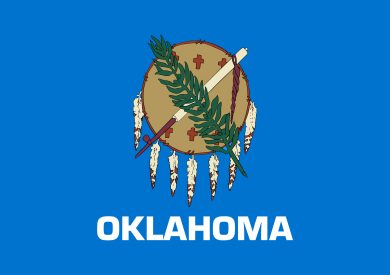
 Popular Cities For Lending in Oklahoma
Popular Cities For Lending in Oklahoma
Lawton
Midwest City
Moore
Muskogee
Norman
Oklahoma City
Owasso
Shawnee
Stillwater
Tulsa
In the Oklahoma real estate market, grabbing properties before your competition is essential for making the best deals. Although real estate investors sometimes go the traditional route and seek bank loans, the process is anything but speedy.
When time is of the essence, waiting for the lengthy process of getting approval is not an option for most investors. Oklahoma hard money lenders specialize in providing hard money loans which provide quick funds to investors. These loans are for a non owner occupied property or in some cases for business purpose loans.
Oklahoma Hard Money Lender FAQ’S
Below are some of the most frequently asked questions we get regarding hard money loans and lenders in Oklahoma.
What Do Oklahoma Hard Money Lenders Specialize in?
Oklahoma hard money lenders specialize in providing short-term, creative financing for real estate investors. If you seek a conventional lender to purchase an investment property, your loan request will be based on the property’s value and your assets. Your credit score, job, and finances will be scrutinized intensely. Hard money lenders base their final loan decisions on the after-repair value. The ARV represents the potential value of a property after all repairs have been accomplished.
What are the Benefits of Oklahoma Hard Money Loans?
Oklahoma hard money loans offer advantages that traditional banks cannot. Lenders like Acamnet Financial offer a higher level of flexibility than banks. When qualifying for this type of loan, lenders do not delve too deeply into the finances of real estate investors. In most cases, simply present the property and your plans, which saves you the hassle of gathering countless financial documents.
Do Oklahoma Hard Money Lenders Look at my Credit Score?
One of the greatest benefits of working with Oklahoma hard money lenders is the lack of credit score requirements. One of the first things a bank does is check your credit score. You can get approved for a hard money loan in Oklahoma even if you have bad credit or poor credit, bankruptcies, and foreclosures in the past. Oklahoma Hard money lenders primarily care about the property you are purchasing.
What is the Interest Rate & Points for Hard Money Loans in Oklahoma?
Interest rates for hard money loans in Oklahoma are typically higher than traditional bank loans (conventional loans) because of the greater risk lenders must take on when approving loans. When searching for a hard money lender near me in Oklahoma, you will find average interest rate is between 8%-15%. You should also be aware that lenders sometimes charge points that are meant to offset their administrative costs. Each point represents 1% of the total loan amount. The average points lenders charge is between 1 to 3. Some lenders may charge up to 10 points. These points are due upfront or at closing, depending on the lender.
What Should I Look for in an Oklahoma Hard Money Lender?
There are many benefits to working with an Oklahoma hard money lender. You just need to make sure you are working with the right lender. You can rely on Acamnet Financial Group when you need us most. We offer reliability, consistency, experience, and support. As a real estate investor, you know the importance of grabbing the best property deals when they become available.
How can Hard Money Lenders in Oklahoma Help Me?
Whether you are new to real estate and real estate projects or an old pro, you know having the capital to purchase real estate is essential. Without funds, you will miss out on real estate transactions. When you partner with hard money lenders in Oklahoma, you will quickly get the money you need without jumping through the hoops of traditional bank lenders.
How do I get a Hard Money Loan in Oklahoma?
When you want a hard money loan in Oklahoma, begin by preparing the property information. Location, size, purchase price, after repair value, repair costs, etc. In most cases, the financing will be based on these numbers. Then, apply for a hard money loan in Oklahoma using this information and supply some financial information. Then, an appraisal will be ordered to assess the loan-to-value ratio, which will influence the loan amount.
How do I Refinance an Oklahoma Hard Money Loan?
Refinance an Oklahoma hard money loan will involve moving from a high interest, short term loan to a longer term, usually lower interest rate loan. Typically a conventional type of loan. When refinancing an Oklahoma hard money loan you will find it will have a more stringent set of guidelines. You will need to have sufficient credit and income qualifications. As the lending landscaping and regulations constantly change, you want to consult a knowledgeable conventional loan expert.

Current Real Estate Trends In Oklahoma (2025)
The current real estate trends in Oklahoma can be summarized as follows:
- In May, sales decreased by 15%, but the average prices of homes in Oklahoma City grew by 1%, showing resilience relative to the national market. Homes in Oklahoma City sold quicker and at a higher cost, almost all going for the list price.
- Mortgage rates ranging from the low 6%s to the high 6%s in 2023 have affected the affordability of potential buyers. This has presented difficulties to the market.
- There has been a decline in the number of homes sold, as well as an expansion in housing inventory.
Despite these challenges, there are still positive aspects to the Oklahoma real estate market:
- Multiple offers for desirable houses demonstrate a strong demand.
- The overall outlook for the Oklahoma real estate market is still positive.
- It is expected that the market will remain stable and not experience any drastic dips for the remainder of 2023.
Housing Market Overview
The housing market in Oklahoma is facing fluctuations and issues. Predictions include a 20% reduction in home prices, a 27.04% rise in housing stock, and a longer average time for properties to sell. These signals show a slowdown in the market, but not necessarily a crash.
Mortgage rates are also projected to increase, which could make buying a home even more unaffordable. However, Oklahoma has some advantages over other states. For instance, it has a low foreclosure rate and stringent lending policies.
Overall, the housing market in Oklahoma is experiencing some challenges, but it also has certain strengths that may help mitigate the impact of these challenges.
Factors Affecting the Market
The housing market in Oklahoma is affected by factors like mortgage rates, housing inventory levels, and the amount of time it takes to sell a home. These variables can influence affordability for buyers, which in turn affects the demand for homes.
The amount of houses available for purchase can also determine prices and the competition between buyers. Fewer homes on the market tend to raise prices, while a large selection gives buyers more options.
The amount of time it takes to sell a home can be an indicator of the market’s demand and activity. Typically, a shorter duration suggests a strong market with a lot of buyer interest.
Market Predictions
Analysts predict that the Oklahoma housing market may experience a slowdown, but not a severe decline. Mortgage rates have risen and homes are taking longer to sell. Despite this, there is no indication that the housing market will crash.
Oklahoma has a low rate of foreclosure and its stricter lending regulations provide security. It is also gaining popularity with buyers, and its benefits in comparison to other states are drawing attention. All these elements combined are leading to this projection.
Sources
https://journalrecord.com/2023/07/06/okc-real-estate-market-resists-us-volatility/
https://www.noradarealestate.com/blog/oklahoma-city-real-estate-market/
https://www.houzeo.com/blog/oklahoma-real-estate-market/

All About Oklahoma
Oklahoma, a state with a rich history and diverse geography, has experienced significant developments and challenges throughout its existence. Derived from the Choctaw language meaning ‘red,’ Oklahoma became the 46th state in 1907.
The discovery of oil in the 20th century propelled the state’s growth, establishing a robust oil industry. However, Oklahoma has also faced difficulties such as the Green Corn Rebellion, the Tulsa Race Massacre, and the Dust Bowl, which resulted in widespread emigration.
The state’s borders were established through treaties, surrounded by Arkansas, Missouri, Kansas, Colorado, New Mexico, and Texas. The economic importance of the oil industry contributed to the early development of Oklahoma, with Tulsa gaining recognition as the Oil Capital of the World.
The state exhibits a diverse climate, characterized by various Köppen climate types and recent episodes of record-setting flooding. Notably, Oklahoma’s topography ranges from the Great Plains to the Ozark Plateau, featuring a gradual slope from the high plains in the west.
Thus, Oklahoma’s unique history, diverse geography, and economic significance make it a dynamic state worthy of exploration and study.
Etymology and Native Presence
The name ‘Oklahoma’ etymology can be traced back to the Choctaw language phrase ‘okla’ and ‘humma,’ which translates to ‘red,’ suggesting a connection to the region’s indigenous presence and culture. Choctaw Nation Chief Allen Wright proposed this name during treaty negotiations in 1866, later becoming the de facto name for Oklahoma Territory.
The indigenous peoples of Oklahoma have a long history in the region, with ancestors of the Wichita, Tonkawa, and Caddo peoples living there during the last ice age. These Native American tribes, along with the Osage and Quapaw tribes, occupied the area when European contact and settlement began.
Spanish explorers, followed by French explorers, claimed the region in the early 18th century. The arrival of European settlers and the impact of forced Native American removal will be discussed in the subsequent section on European contact and settlement.
European Contact and Settlement
French explorers claimed the region of present-day Oklahoma in the early 18th century, contributing to the European contact and settlement in the area. These explorers, such as René-Robert Cavelier, Sieur de La Salle, and François and Louis Juchereau de St. Denis, established trading posts and forts to facilitate trade with Native American tribes and further French interests.
However, their presence was short-lived, as France ceded the territory to Spain in 1762. Spain then held control of the region until 1800, when it was returned to France, only to be sold to the United States as part of the Louisiana Purchase in 1803. This marked the beginning of a new era of American settlement and expansion into the region.
With the arrival of European powers, tensions between Native American tribes and settlers escalated, ultimately leading to the forced removal of indigenous peoples from the area.
Native American Removal
With the arrival of European powers, tensions between settlers and Native American tribes in present-day Oklahoma escalated, ultimately leading to the forced removal of indigenous peoples from the area. The United States government implemented a policy of Indian Removal in the 19th century, which aimed to relocate Native American tribes to designated territories in the West.
The Choctaw and Cherokee Nations were among the first to be forcibly removed from their ancestral lands in the Southeastern United States. Thousands of Native Americans, including the Choctaw, Cherokee, Creek, Chickasaw, and Seminole tribes, were forced to undertake arduous journeys along the Trail of Tears to Indian Territory, which later became Oklahoma.
This tragic chapter in American history resulted in the displacement and suffering of Native American communities, as they were uprooted from their homes and subjected to harsh living conditions. This forced removal set the stage for the subsequent establishment of cattle trails and ranching in Indian Territory.
Cattle Trails and Ranching
Cowboys played a pivotal role in expanding the cattle industry in what is now Oklahoma, driving their herds north and settling illegally in Indian Territory. As demand for beef increased in eastern cities, cattle ranches in Texas struggled to meet the needs. The vast open spaces and abundant grasslands of the Indian Territory provided the perfect solution.
Cowboys, often referred to as ‘cowpokes’ or ‘wranglers,’ herded cattle along four of the five major cattle trails that traversed the western frontier. These trails, such as the Chisholm Trail and the Great Western Trail, passed through Indian Territory, attracting cowboys and their herds.
However, the increased presence of white settlers in the area led to the establishment of the Dawes Act in 1887, which aimed to divide and distribute tribal lands. This transitioned Indian Territory into Oklahoma Territory, marking a significant step towards statehood and development.
Statehood and Development
The development of what is now Oklahoma progressed significantly with the establishment of the Dawes Act in 1887. This act aimed to divide and distribute tribal lands, transitioning Indian Territory into Oklahoma Territory. As a result, white settlers increased, leading to further regional development.
Additionally, the discovery of petroleum in the 20th century played a crucial role in Oklahoma’s development. The oil industry boomed, with Tulsa becoming known as the World’s Oil Capital. This led to a significant economic impact and helped shape the state’s economy.
However, Oklahoma also faced civil unrest during this period, with events such as the Green Corn Rebellion and the Tulsa Race Massacre.
The state continues to thrive economically, with Oklahoma City and Tulsa serving as the primary economic anchors.


 Popular Cities For Lending in Oklahoma
Popular Cities For Lending in Oklahoma